What constitutes the unfolding narratives of history can often be observed in those symbols and monuments that society chooses to memorialise in particular spaces. Through a series of monolithic concrete sculptures reminiscent of ancient civilisations that have fallen to the ravages of war and political conflict, contemporary South African sculpture artist Ledelle Moe compels us to understand our human proclivity to commemorate the dead in her exhibition "When", held at MASS MoCA.
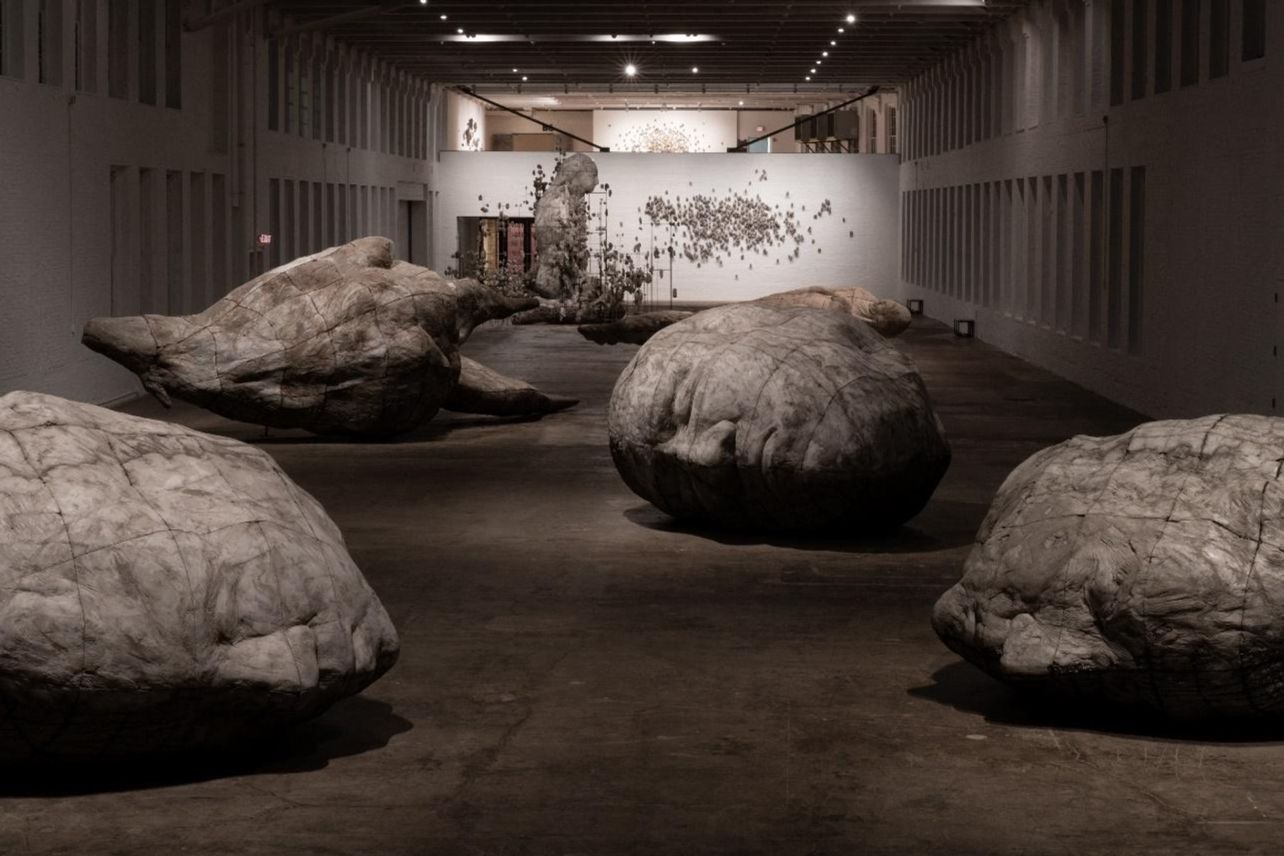
The exhibition is permeated, almost haunted, by an ambience of mortality meant to allude to both the name of the exhibition and the inevitability of death that does not have us wondering if, but rather when we will die. The eroding and weathering quality of Moe’s sculptures are a meditation on the interplaying themes of remembrance and forgetting, displacement and a sense of belonging, and the contradicting characteristics of impermanence and permeance that exist between an eternal monument and the transience of a human life.
Unlike traditional sculptures that honour the victors, Moe has chosen to honour those anonymous victims of war — those who are often forgotten — in her sculptures. Begun in 2005, Moe’s Memorial (Collapse) (2019) series is a tribute to the nameless victims who have departed violently during times of conflict. The figures particularly emerge within the context of the South African xenophobic attacks that occurred in 2019. Composed of three male heads, the recumbent sculptures possess a sleeping and serene expression intended to contrast with the callousness of their deaths.
Susan Cross writes that the hollowness of the heads “function for Moe as vessels, or skins, which hold not only what has been lost but also, in her words, ‘what connects us’—like the breath between us.”
Statues have perpetuated masculine heroism and white supremacy since the colonial era. Moe subverts this penchant through Relief (2010), a figure of a writhing hybrid animal laying on its back. Influenced by the events of the 2015 Rhodes Must Fall student movement that began in South Africa, Relief (2010) references recent global protests concerning the decolonisation of public spaces. To protestors in South Africa, Europe and the Americas, decolonisation entailed removing those controversial monuments that are symbolic of institutional racism, and imperialism.
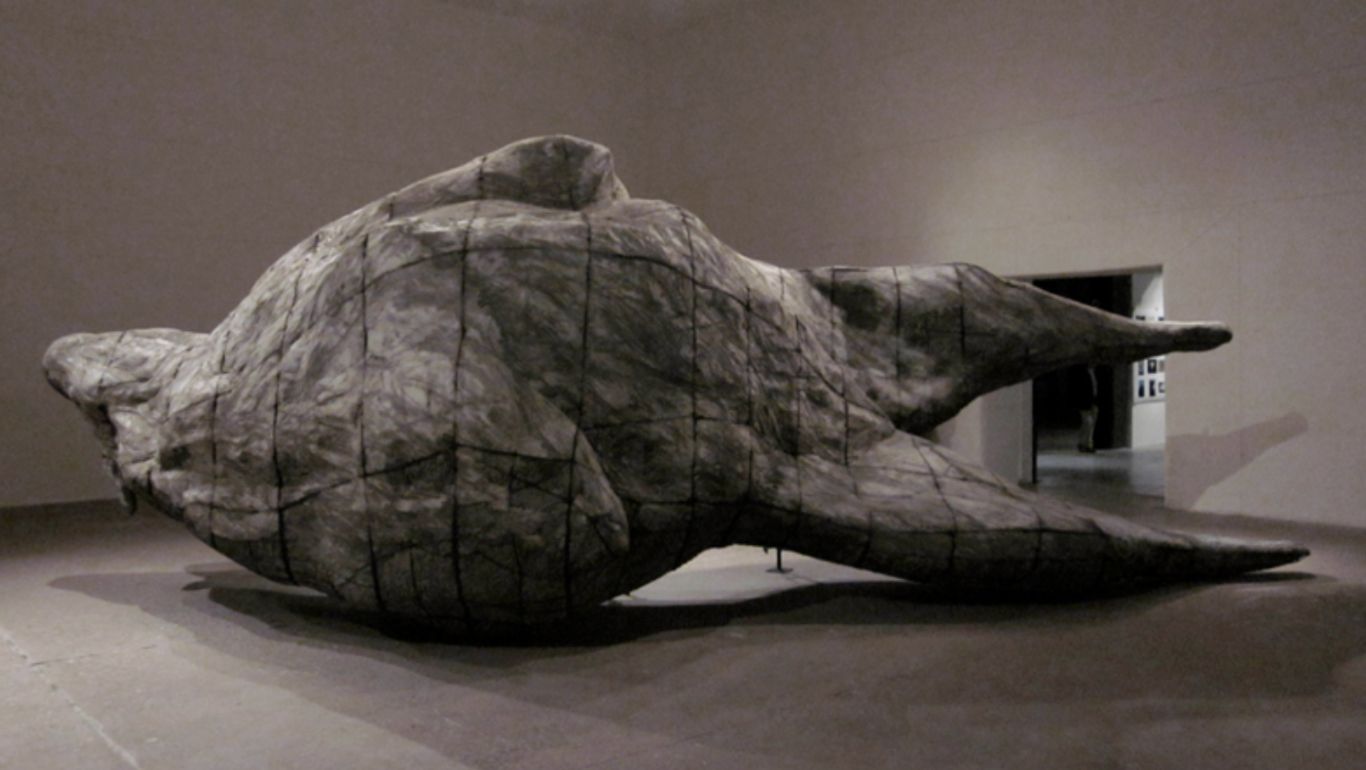
The Transitions/Displacements (2012) series consist of three nude and reclining women. This series, finding refuge in the forms of funerary art, was inspired by the death of Moe’s mother and grandmother. The two large figures are placed closely together, while the smallest figure of the trio, believed to reference Moe, who lives on, is slightly tilted in the opposite direction. The upper body of the figure is also enshrouded by smaller sculptural elements signifying spiritual avian imagery associated with the afterlife. Here, Moe’s sculptures become the manifestation of grief and serve as a presence filling the unrelenting absence left in the wake of death when one must contend with their own aliveness.
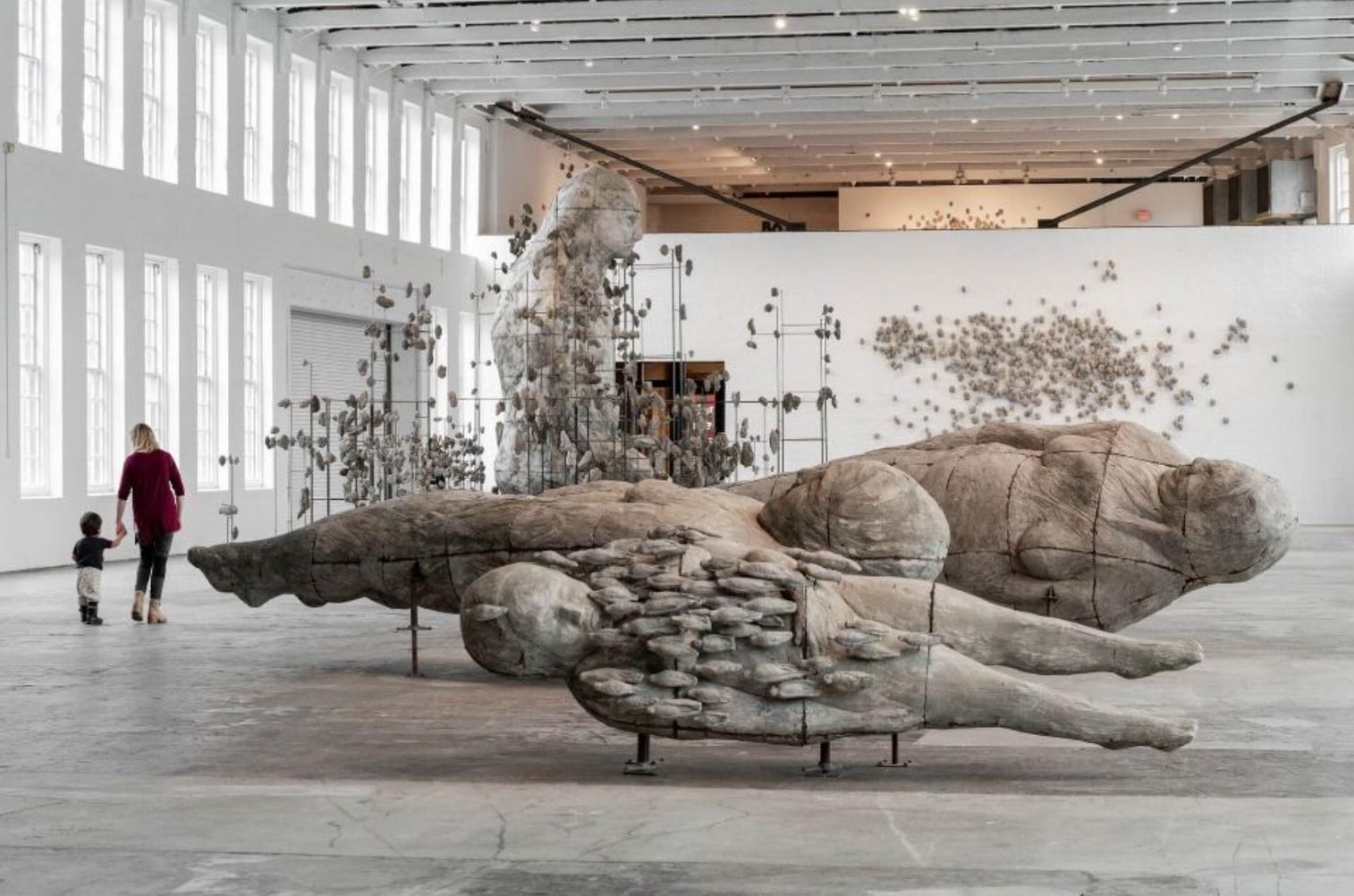
An aggregation of small sculptural forms, representing all living matter, surround the figure titled Remain (2019). Measuring eighteen feet high, the figure is seemingly androgynous according to the artist, but perceived by many to be a kneeling woman caught in the act of prayer or a state of intermission. Coinciding with the essence of the Transitions/Displacements series, the title Remain, references those who are left behind, those who “remain” after losing a loved one. Remain (2019) is a reflection of the generational cycle of life and death.
“In the work Remain I am exploring the singular body in relation to multiple bodies,” says Moe in an interview with Another Chicago Magazine. “The singular body is conceived of as a dynamic, porous site, a kind of assemblage of forces, in flux and in constant change. It speaks to the notion that a permanent monument can be understood as a “series of events,” both in terms of its material, which is subject to the ravages of time—erosion, touch, accretions, chips and gashes, marks, and patina—as well as shifts in political meaning and context. Even location.”
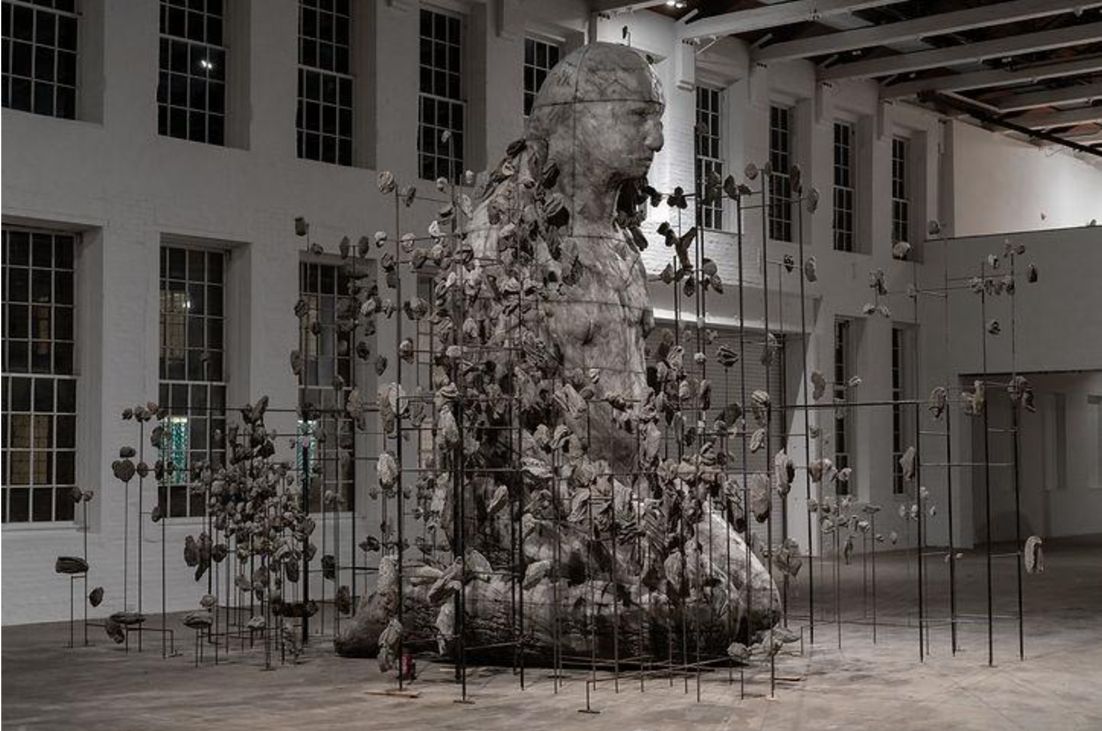
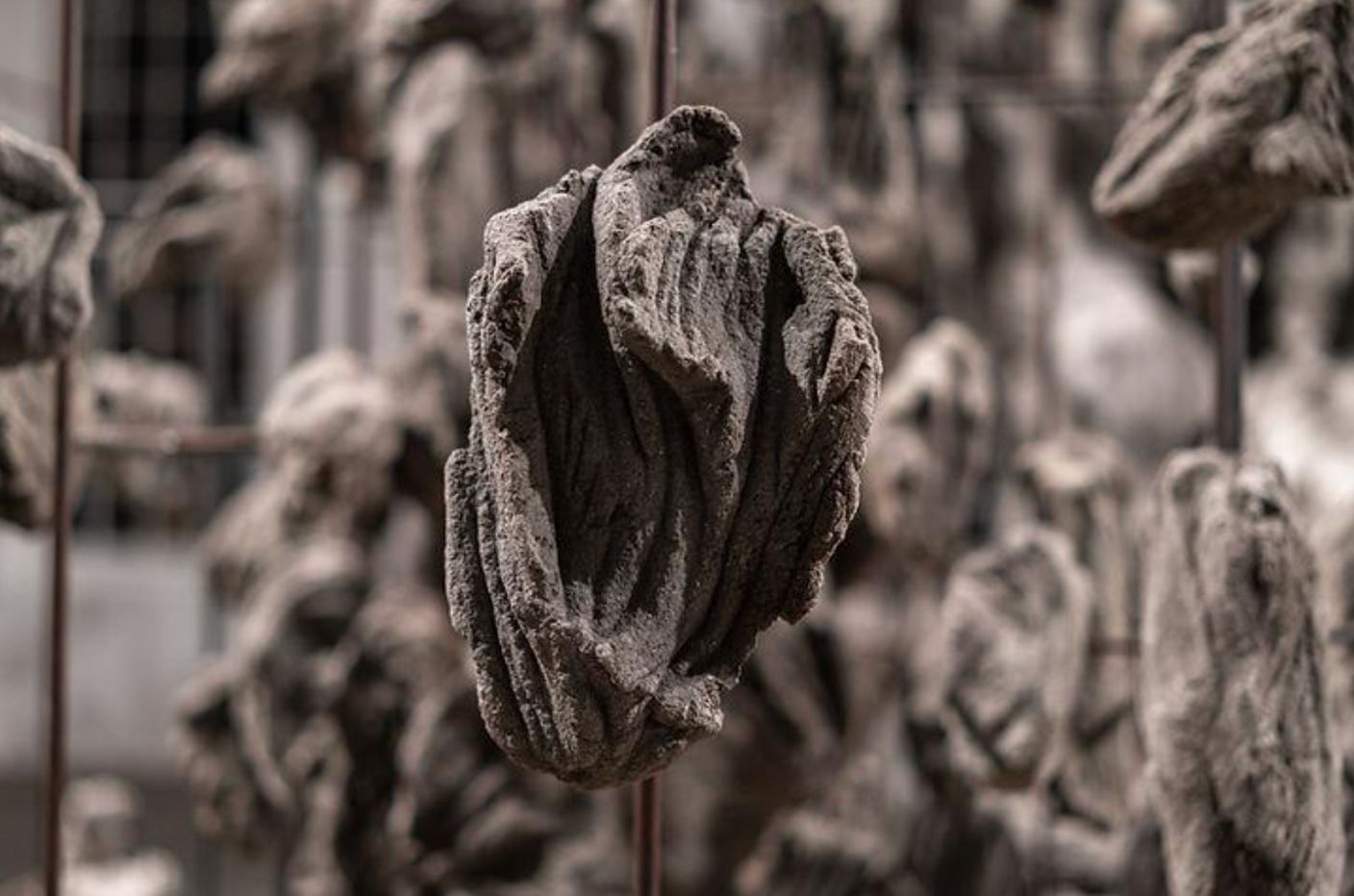
Moe comments on the profound interconnectedness of the individual and the collective in her Congregation (2006-2019) series. Made from both concrete and soil sourced from the places where she has travelled, this series of self-portraits embodies a sort of transnational map that converses with the politics surrounding identity, migration, location and dislocation. Congregation asks us to consider what it means to create a human face quite literally from the soil of a particular place tied to political ideologies such as nationalism and patriotism. The use of soil also captures the notion of returning to the Earth that connects us and a becoming Earth that occurs after bodily decay and decomposition.
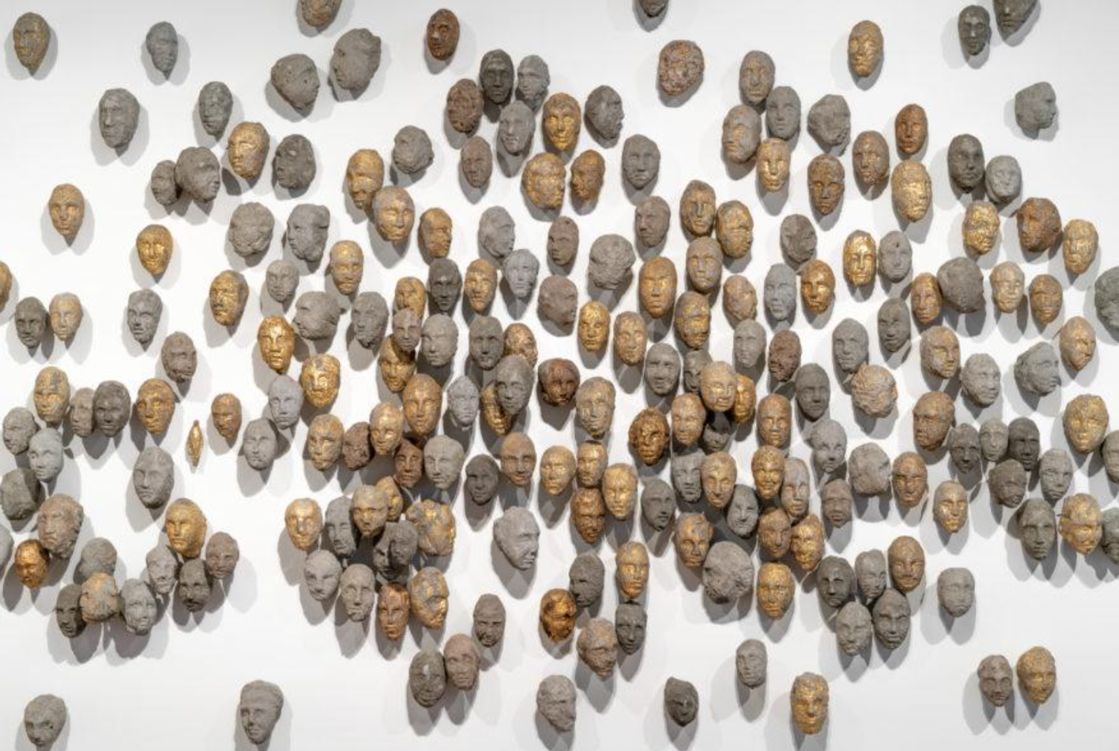
Moe’s sculptures differ from traditional monuments in their structure and material, as her sculptural segments are constantly assembled and disassembled, and are neither made from immortalising stone or bronze, but from concrete. The prolific industrial use of concrete carries with it a profound carbon footprint. However, Moe’s use of the material not only contributes to, but is also intended to foreground the environmental problem simultaneously. In so doing, Moe’s sculptures reflect the United Nations Sustainable Development Goal for Life on Land.
Moe’s use of concrete as her primary medium, is both poetic and symbolic, as it is akin to her narratives of life’s evanescence and the vicissitudes of loss. In an interview with Another Chicago Magazine, Moe says, “I feel that the industrial qualities of concrete and the way in which it can fold and behave as a skin are complications that I hope to find in the work: a kind of fragility in contrast to the material’s harshness.”
Sculptures presuppose the “grievability” of a life — with each constructed in the hope that all bodies are neither forgotten nor left ungrieved. In the midst of mourning the many lives being lost to war and conflicts currently raging on around the globe, Ledelle Moe’s sculptures above all echo the pacifist spirit embedded in the United Nations Sustainable Development Goal for Peace, Justice and Strong Institutions.
Residing within the empty spaces of sculptures is not only the absence of those we have lost, but also the memories of certain human histories we would rather choose to forget. Still sculptures remind us that we have loved and that certain histories cannot happen again. The sculptures of Ledelle Moe are an aide to both of these memories of nostalgia and remorse. The sculptures we construct are the testaments of war, and the promise by those left behind to remember the fallen.
See Ledelle Moe’s When exhibition and more of her other work on her website.
